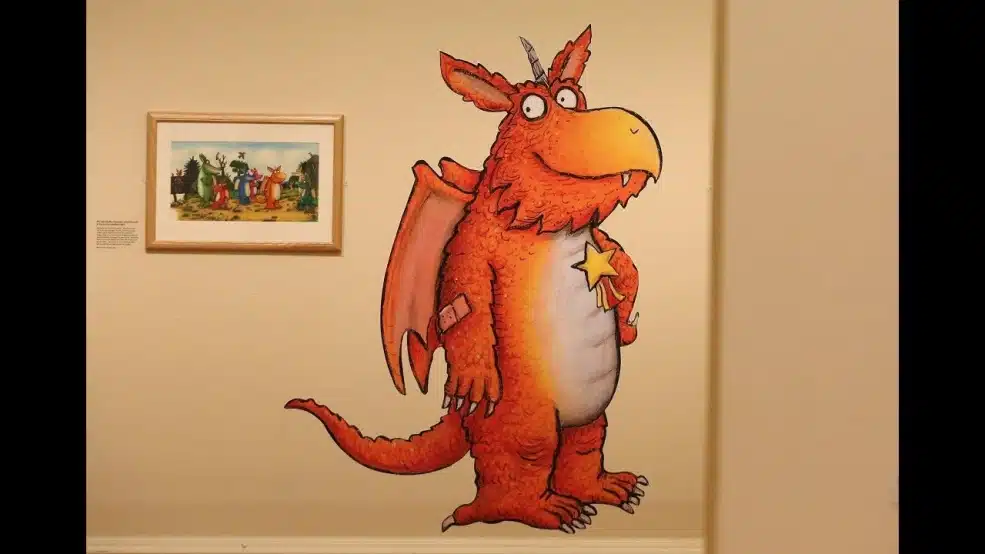Drawing is one of the most accessible forms of art, requiring only a pencil and paper to get started. Whether you’re an absolute beginner or someone looking to explore their creative side, Easy:zog-g1ykrr8= Art Drawing provides a wonderful opportunity to develop your artistic skills and express yourself. This guide will walk you through various techniques, ideas, and tips to help you create simple yet beautiful drawings, even if you’ve never drawn before.
Why Start with Easy Art Drawing?
Easy art drawing is perfect for beginners because it allows you to build confidence and gradually develop your skills without feeling overwhelmed. By focusing on simple subjects and techniques, you can enjoy the process of creating art without the pressure of perfection. Moreover, easy drawing projects are quick and satisfying, offering a sense of accomplishment that encourages you to keep going.
1. The Basics of Easy Art Drawing
Before diving into specific drawing ideas, it’s important to understand the basics of drawing. These foundational skills will serve as the building blocks for your future artwork.
A. Understanding Lines and Shapes
Drawing is essentially about creating lines and shapes. By mastering these elements, you can draw anything from simple objects to complex scenes.
- Lines: Start by practicing different types of lines, including straight, curved, wavy, and zigzag. Experiment with varying the thickness and pressure to see how it affects the appearance of your lines.
- Shapes: Basic shapes such as circles, squares, triangles, and rectangles are the foundation of most drawings. Practice drawing these shapes freehand to improve your control and accuracy.
B. Learning to Observe
One of the key skills in drawing is learning to observe your subject closely. Pay attention to details, such as the way light and shadow fall on an object, or the unique shapes and textures that make it distinct. Observation helps you translate what you see onto paper more accurately.
C. Using Simple Tools
For easy art drawing, all you need is a pencil and paper. A basic HB pencil is a great starting point, but you might also want to experiment with different types of pencils, such as softer B pencils for shading or harder H pencils for fine lines. A good eraser is also essential for correcting mistakes and refining your work.
2. Easy Drawing Ideas for Beginners
Now that you have a grasp of the basics, let’s explore some easy drawing ideas that are perfect for beginners. These projects are simple, yet they allow for plenty of creativity and personal expression.
A. Drawing Simple Objects
Starting with simple objects is a great way to practice your drawing skills. These subjects are easy to find and don’t require complex techniques.
- Fruit: Begin with drawing a simple apple or banana. Focus on getting the shape right, and then add shading to give it a more three-dimensional appearance.
- Cup: A cup is another easy object to draw. Start with the basic outline and then add details like the handle and any patterns on the surface.
- Flowers: Flowers are beautiful and relatively simple to draw. Start with a daisy or tulip, and practice drawing the petals and leaves.
B. Creating Cute Characters
Drawing cute characters is a fun and accessible way to get creative. These drawings are often stylized, so there’s no need to worry about realism.
- Animals: Start with easy animals like cats, dogs, or rabbits. Use basic shapes like circles and ovals to form the body and head, and add details like ears, eyes, and whiskers.
- Cartoon Faces: Draw simple cartoon faces with exaggerated features like big eyes and wide smiles. This is a great way to practice expressions and bring personality to your drawings.
- Monsters: Let your imagination run wild by creating your own cute monsters. Use unusual shapes and colors to make them unique.
C. Exploring Patterns and Mandalas
If you enjoy repetitive and meditative drawing, patterns and mandalas are perfect for you. These drawings focus on symmetry and repetition, which can be both relaxing and visually striking.
- Zentangles: Zentangles are abstract drawings made up of intricate patterns. Start by dividing your paper into sections and filling each one with a different pattern. There are no rules, so feel free to experiment with shapes and lines.
- Mandalas: Mandalas are circular designs with symmetrical patterns radiating from the center. Begin by drawing a large circle and dividing it into smaller sections. Fill each section with patterns like dots, lines, or floral motifs.
D. Doodling Everyday Scenes
Doodling is a spontaneous and informal way to draw, perfect for when you want to create without pressure.
- Cityscapes: Draw a simple cityscape with basic shapes for buildings and a few details like windows and doors. You can add trees, cars, and people to bring the scene to life.
- Nature Scenes: Create a serene nature scene with a few trees, a river, and some mountains in the background. Use simple lines and shapes to keep it easy and relaxed.
- Interiors: Sketch a cozy room with furniture like a sofa, table, and lamp. This is a great way to practice perspective and proportion.
3. Tips for Making the Most of Easy Art Drawing
As you explore easy art drawing, here are some tips to help you get the most out of your practice and continue improving your skills.
A. Practice Regularly
Like any skill, drawing improves with regular practice. Set aside time each day, even if it’s just 10 or 15 minutes, to draw something. Over time, you’ll notice your confidence and abilities growing.
B. Don’t Be Afraid to Make Mistakes
Mistakes are a natural part of the learning process, so don’t be discouraged if your drawings don’t turn out the way you want them to. Use mistakes as learning opportunities and remember that every artist starts somewhere.
C. Experiment with Different Styles
As you gain confidence, try experimenting with different styles of drawing. You might start with simple line drawings and then explore shading, cross-hatching, or even adding color. Each new technique you try will add to your artistic toolkit.
D. Use Reference Images
Reference images can be incredibly helpful, especially when you’re trying to draw something unfamiliar. Find images online or take your own photos, and use them to guide your drawing. Observing how objects look in real life will improve your ability to capture them on paper.
E. Share Your Work
Sharing your drawings with others can be a great way to get feedback and encouragement. Join online art communities, post your work on social media, or simply share your sketches with friends and family. Seeing how others respond to your art can be motivating and inspiring.
4. Moving Forward: From Easy to More Complex Drawings
Once you’ve mastered easy art drawing, you might feel ready to tackle more complex subjects. Consider exploring figure drawing, still life compositions, or even abstract art. The skills you’ve developed with easy drawings will serve as a strong foundation as you progress to more challenging projects.
A. Gradually Increase Complexity
As you gain confidence, start adding more details and complexity to your drawings. You might begin with a simple flower and then move on to a full bouquet or a garden scene. By gradually increasing the difficulty, you’ll continue to improve without feeling overwhelmed.
B. Take on New Challenges
Don’t be afraid to step out of your comfort zone and try new things. If you’ve been focusing on cute characters, try drawing realistic portraits or landscapes. Each new challenge will push you to grow as an artist.
Conclusion
Easy art drawing is a wonderful way to begin your artistic journey. By starting with simple subjects and techniques, you can quickly build your skills and gain confidence in your abilities. Whether you’re drawing cute characters, exploring patterns, or doodling everyday scenes, the key is to keep practicing and enjoy the process. So grab your pencil and paper, and start creating today!

